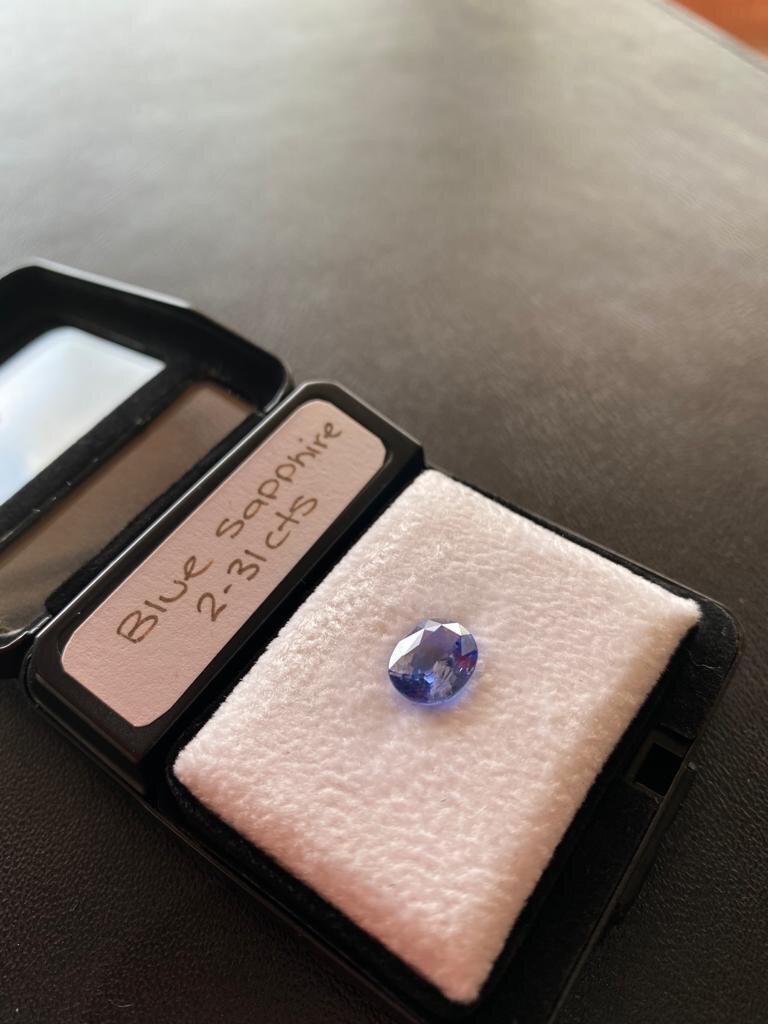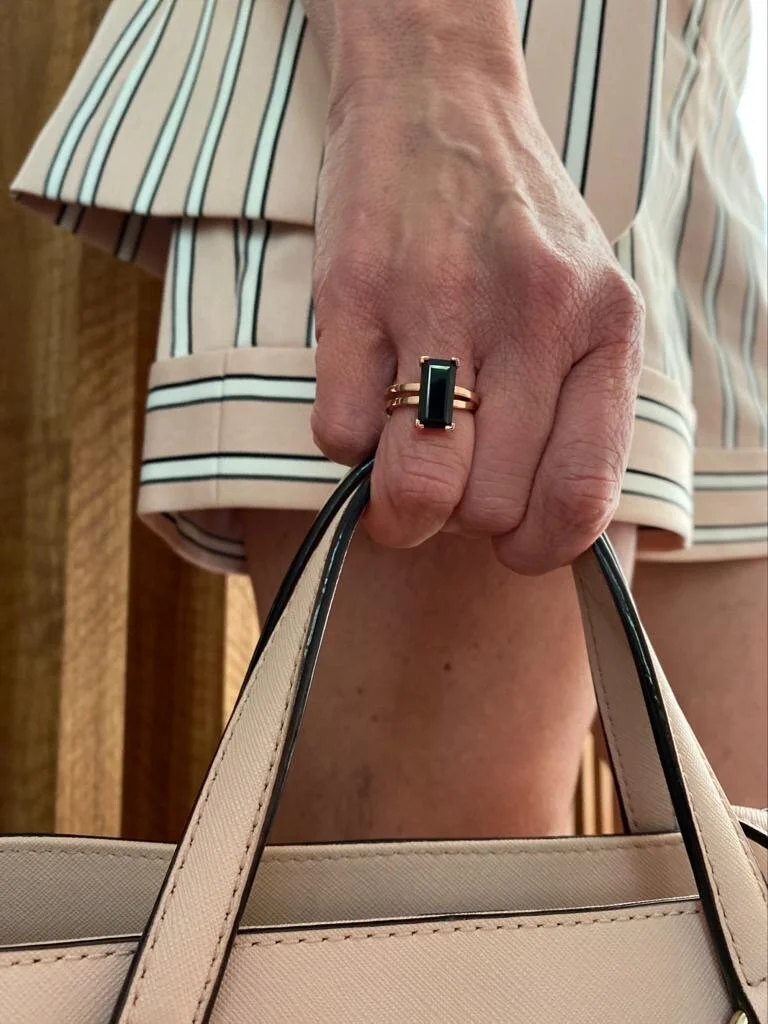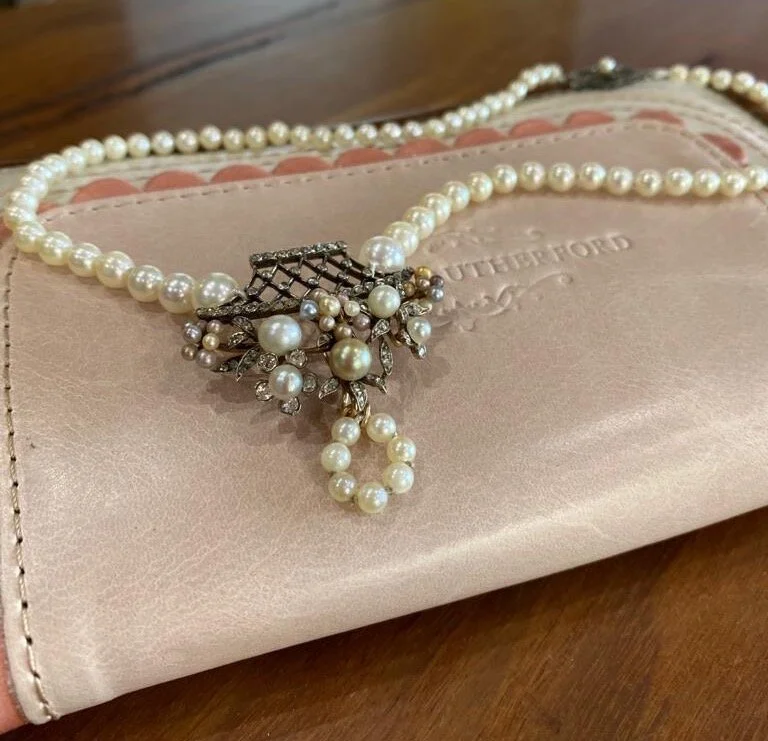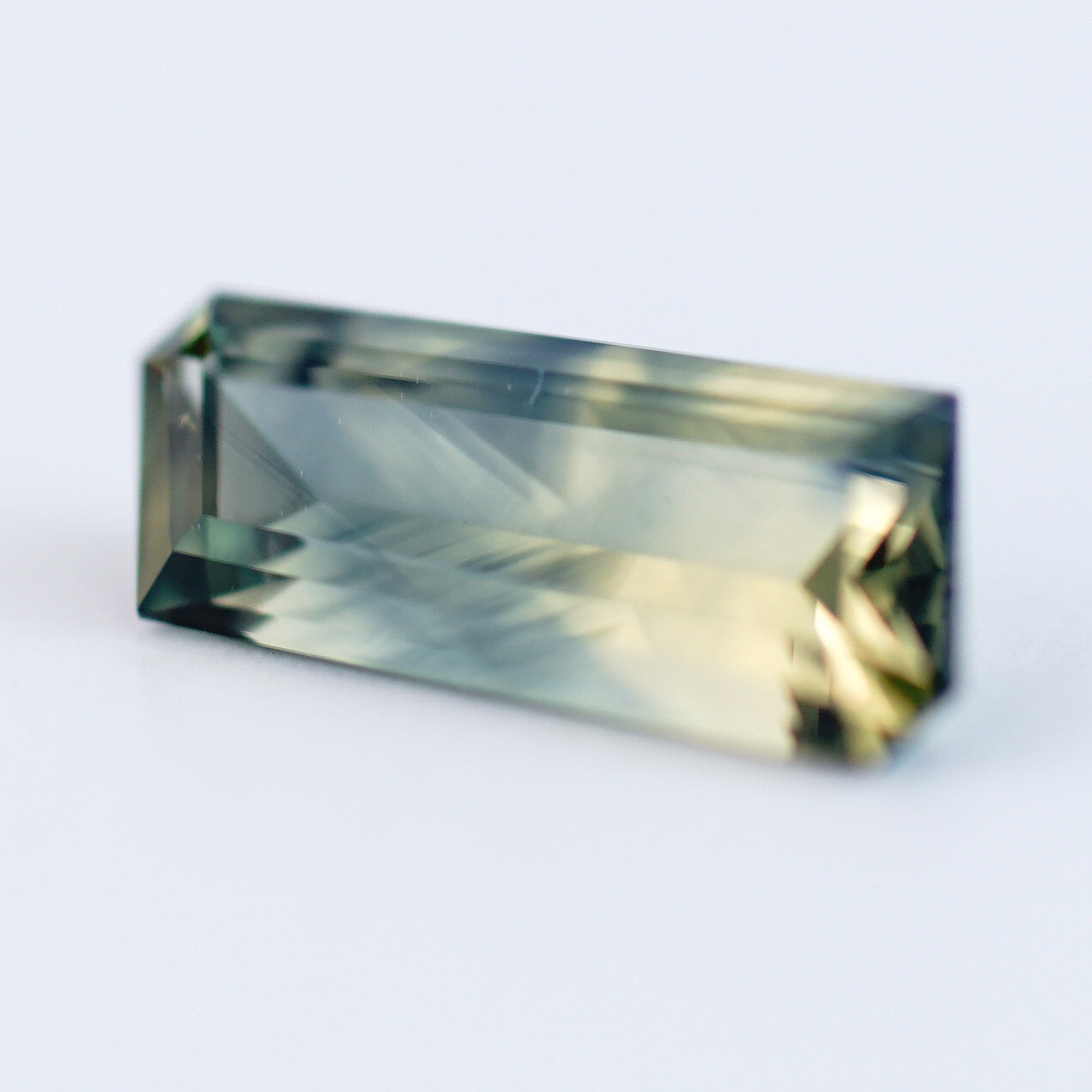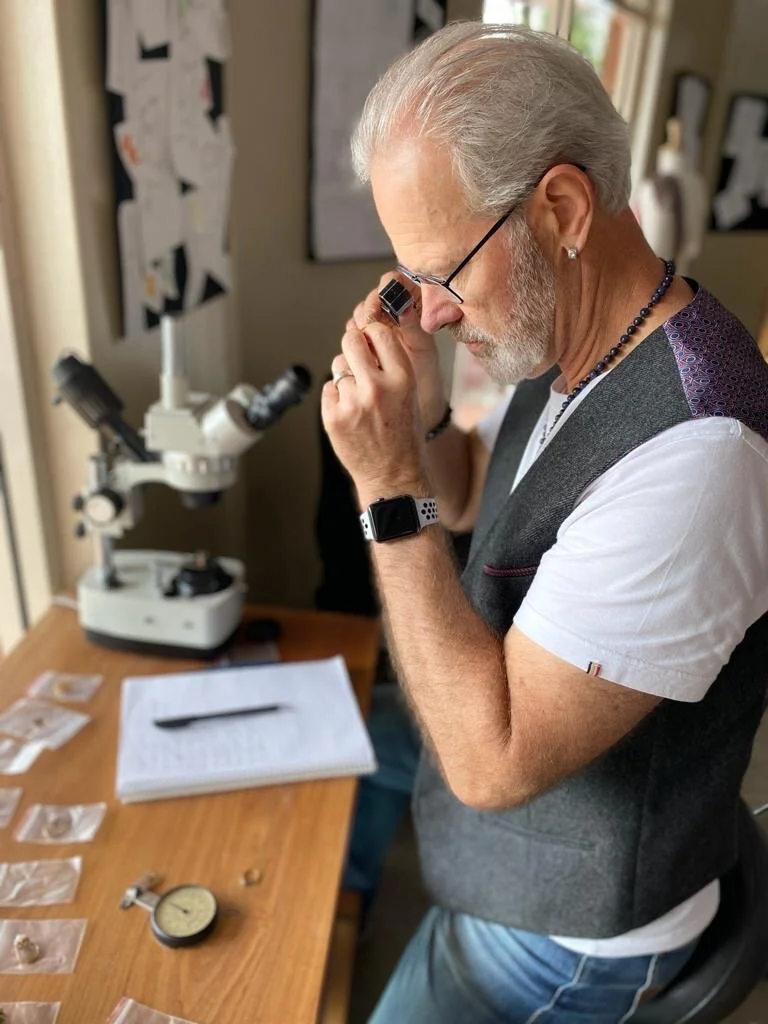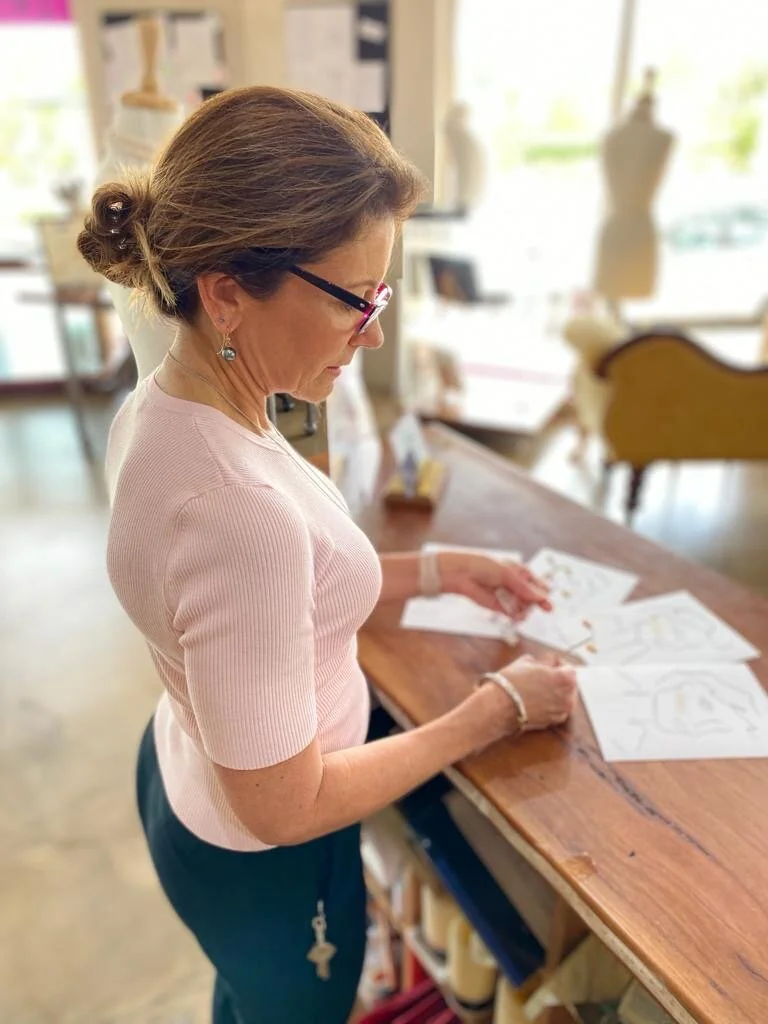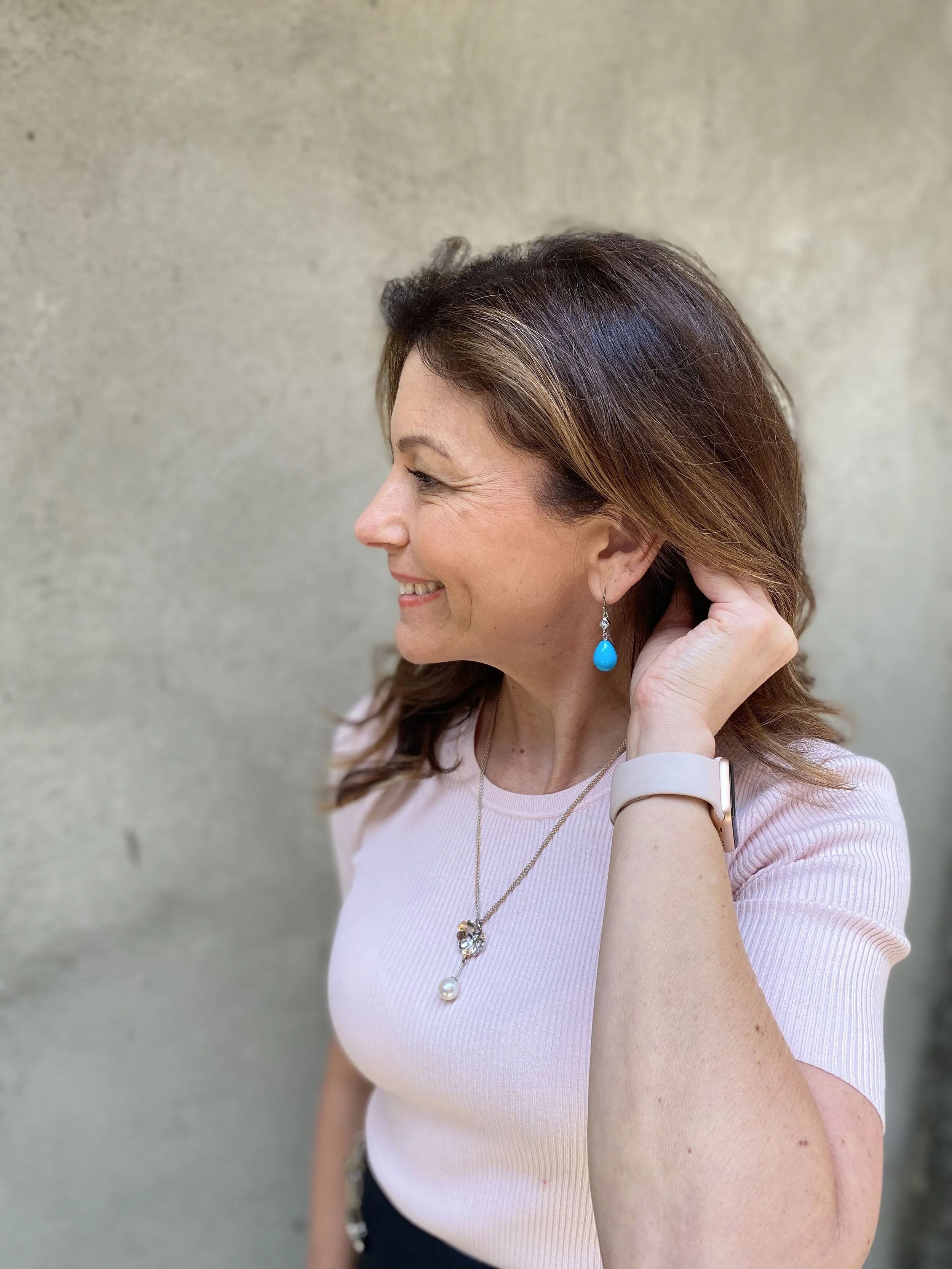Talk to a Gemmologist... Classic Blue Gemstones

Today I’m pleased to be interviewing Rob, Umun Jewellery Studio’s resident gemmologist.
Today Rob, I would like to have a chat with you about gemstones and their origins.
I’m very aware that the world is full of beautiful gemstones in a wonderful array of colours but today I would really like to focus on the gemstones that come in or are close to this year’s pantone colour…Classic Blue. A hue that we are currently hearing a lot about in the design and fashion world.
Could you tell us here today which gemstones come in or are close to this classic hue?
There are a few so here we go, we have the extremely rare pure carbon-blue diamond, corundum-sapphires, zoisite-tanzanite, zircon, tourmaline and from the rock lazurite- lapis.
Where are these gemstones most likely to be mined?
Natural blue diamonds are extremely rare and have been mined in Russia.
Blue sapphires have been found in many countries, with significant deposits of the deepest blues found here in Australia in northern Queensland, though these are usually very dark shades of blue. Beautiful rich premium blues are found in Burma with Si Lanka being home to a wide range and possibly the most favoured of blues from cornflour to royal blue tones. More recently, Montana has come into the market with a wonderful array of blue sapphires, in a slightly different tone again which we are very keen to add to our collection.
Thailand also mines blue sapphires.
The vibrant tanzanite is found in only one place in the world and that’s Tanzania.
Zircon is very rare in classic blue though but has been discovered in Burma, Thailand, Si Lanka and Tanzania.
How about Tourmaline?
When tourmaline is blue it is known as Indicolite, has been found in Brazil and Sri Lanka but is rare in this shade.
Oop’s nearly forgot the beautiful Lapis Lazuli… Lapis is found mostly in Chilli and Afghanistan.
How do gemstones become blue?
Mmmm… the subject of colour is a vast and complex one but basically it all happens in the atomic structure, unique to each gemstone. For example the natural colour pigments in blue sapphire are iron (Fe) and titanium (Ti) that determine the gemstones blueness.
Is there differences in the hardness of the gemstones we are talking about here today?
Yes, there is, diamond is our hardest at 10, (on the Mohs scale of hardness) closely followed by sapphire at 9, then tanzanite, zircon and tourmaline are around 7 with lapis being the softest here today at 5.
Which of these beauties would you recommend if I wanted to have a dress ring designed and made? By the way I would really love to be able to wear this every day?
A blue diamond if you have the budget … haha . A blue sapphire is also perfectly fine.
Everything else is better for occasion wear.
Thanks for your time today Rob…
An important note before I sign off today… looking at all these gemstones and their ever so slightly different tones of blue, there is a blue for everyone from the depths of the hue to the tone of the hue. Make an appointment with Clarisse to discuss all things colour and find the blue for you, or make an appointment with Rob to discuss gemmology a little further!


